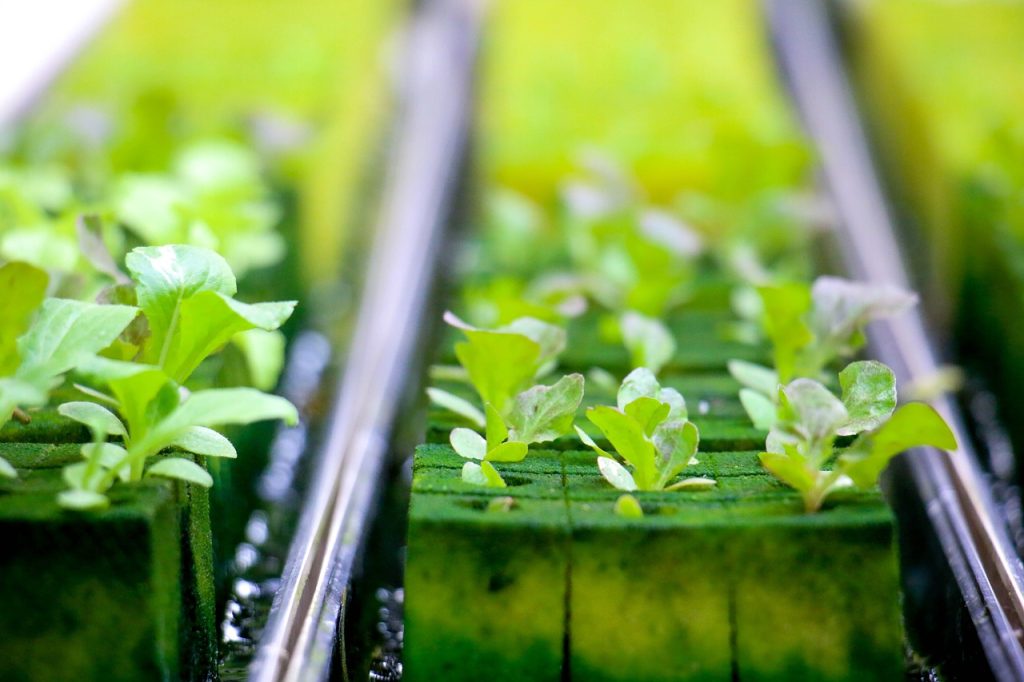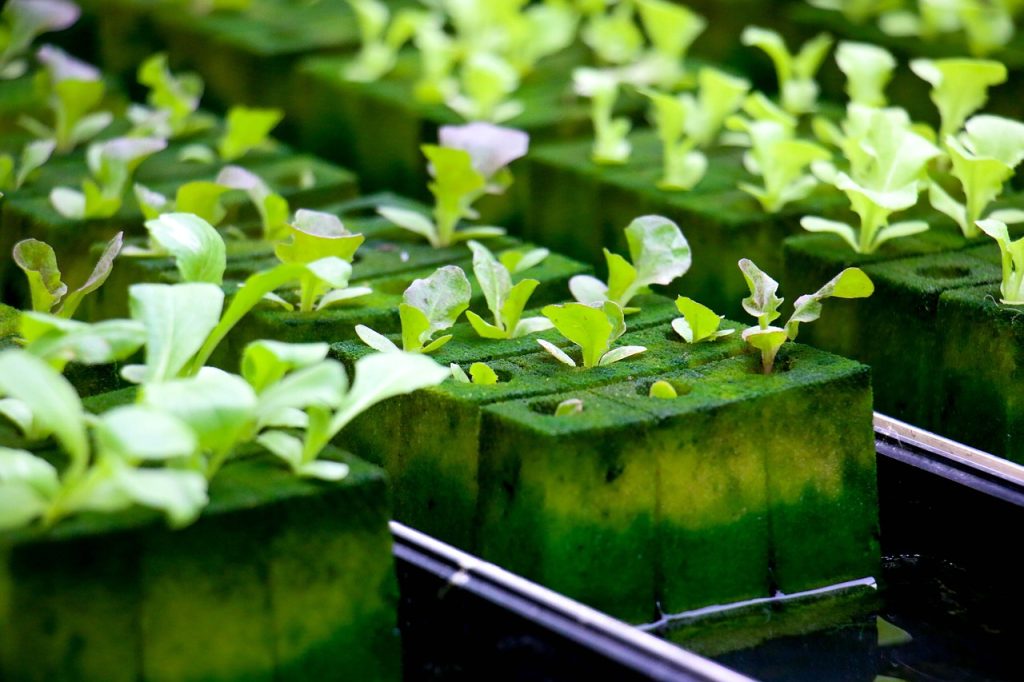
Did you know that hydroponic farming is revolutionizing the way we grow produce? In this article, you will discover the numerous benefits of hydroponic farming and why it is the secret to achieving year-round produce. Let’s explore how this innovative farming method can transform the way you think about gardening.

This image is property of pixabay.com.
Understanding Hydroponic Farming
Hydroponic farming is a soil-less method of growing plants in a nutrient-rich water solution. By eliminating the need for traditional soil, plants can absorb essential nutrients more efficiently, leading to faster growth and higher yields. This innovative farming technique is gaining popularity among modern gardeners for its sustainability and efficiency.
How Does Hydroponic Farming Work?
In hydroponic farming, plants are grown in containers filled with a nutrient solution, which provides all the essential elements for plant growth. By directly delivering nutrients to the plant roots, hydroponic systems enable plants to grow faster and produce more bountiful harvests. This method eliminates the need for soil, reducing water usage and avoiding soil-borne diseases and pests.
The Benefits of Hydroponic Farming
The benefits of hydroponic farming are vast and diverse, making it an attractive option for growing fresh and nutritious crops. From conserving water to reducing the risk of pests and diseases, hydroponic systems offer a sustainable and efficient approach to agriculture.
Water Conservation
One of the most significant advantages of hydroponic farming is its ability to conserve water. Traditional soil gardening can be water-intensive, leading to water wastage and environmental strain. In contrast, hydroponic systems use up to 90% less water than traditional gardening methods, making them an eco-friendly choice for growers concerned about water conservation.
Year-Round Cultivation
Hydroponic farming allows for year-round cultivation, regardless of external weather conditions. By controlling factors such as temperature, light, and humidity, growers can create an ideal environment for plant growth, leading to consistent harvests throughout the year. This flexibility is particularly beneficial for regions with harsh climates or limited growing seasons.
Pest and Disease Control
One of the significant advantages of hydroponic farming is its ability to reduce the risk of soil-borne diseases and pests. Without the presence of soil, plants are less susceptible to common garden pests and diseases, resulting in healthier crops and fewer chemical inputs. This natural pest management approach promotes plant vitality and reduces the need for harmful pesticides.
Faster Growth and Higher Yields
Hydroponic systems promote faster plant growth and higher yields by delivering essential nutrients directly to the plant roots. With increased nutrient uptake and optimized growing conditions, plants can reach maturity quicker and produce more abundant harvests. This efficiency is particularly beneficial for commercial growers looking to maximize productivity and profitability.
Environmental Sustainability
Hydroponic farming offers a sustainable approach to agriculture by reducing water usage, minimizing chemical inputs, and promoting resource efficiency. By eliminating the need for soil, hydroponic systems conserve land and reduce environmental degradation associated with traditional farming practices. This eco-friendly farming method is an excellent choice for environmentally conscious growers seeking to minimize their ecological footprint.
Nutrient-Rich Produce
Plants grown in hydroponic systems are known for their exceptional taste, quality, and nutrition. By providing plants with a well-balanced nutrient solution, hydroponic farming produces flavorful and nutritious crops that are free from contaminants and pesticides. This ensures that consumers can enjoy fresh, healthy produce that is rich in vitamins, minerals, and antioxidants.
Types of Hydroponic Systems
There are several types of hydroponic systems available, each with unique characteristics and benefits. Understanding the different types of hydroponic systems can help you choose the right method for your growing needs and preferences.
Deep Water Culture (DWC)
Deep Water Culture (DWC) is a simple and effective hydroponic system where plants are suspended in a nutrient solution, allowing their roots to grow freely. This system is easy to set up and maintain, making it an ideal choice for beginners or growers looking for a low-maintenance option. DWC systems are popular for growing leafy greens, herbs, and small vegetables.
Nutrient Film Technique (NFT)
Nutrient Film Technique (NFT) is a hydroponic system where a thin film of nutrient solution flows across plant roots, providing them with essential nutrients. This system is highly efficient in delivering nutrients and oxygen to the roots, promoting healthy plant growth. NFT systems are commonly used for growing fast-growing crops such as lettuce, strawberries, and herbs.
Ebb and Flow
Ebb and Flow, also known as Flood and Drain, is a hydroponic system where plants are periodically flooded with a nutrient solution before draining back into a reservoir. This alternating cycle ensures that plants receive an adequate supply of nutrients and oxygen, promoting robust root development and growth. Ebb and Flow systems are versatile and suitable for a wide range of crops, including tomatoes, peppers, and cucumbers.
Drip Irrigation
Drip Irrigation is a hydroponic system where a nutrient solution is dripped directly onto plant roots through a network of tubing and emitters. This method allows for precise control over nutrient delivery and hydration, ensuring that plants receive the necessary nutrients and water. Drip Irrigation systems are popular for growing large plants such as tomatoes, peppers, and eggplants.
Aeroponics
Aeroponics is a high-tech hydroponic system where plant roots are suspended in the air and misted with a nutrient solution. This system delivers nutrients and oxygen directly to the roots, promoting rapid growth and superior nutrient uptake. Aeroponic systems are ideal for growing a wide variety of plants, including leafy greens, herbs, and flowering crops.
Getting Started with Hydroponic Farming
If you are interested in trying hydroponic farming, there are several essential steps to consider before getting started. From selecting the right system to choosing suitable crops, these tips can help you embark on your hydroponic gardening journey with confidence.
Choose the Right Hydroponic System
Before starting a hydroponic garden, it is essential to choose the right system based on your space, budget, and growing goals. Consider factors such as available space, desired crop types, and maintenance requirements when selecting a hydroponic system. Beginner-friendly systems like Deep Water Culture (DWC) or Nutrient Film Technique (NFT) are excellent choices for first-time growers.
Select Suitable Crops
When planning your hydroponic garden, select crops that are well-suited for hydroponic cultivation and align with your preferences and dietary needs. Leafy greens, herbs, and small vegetables are popular choices for hydroponic gardening due to their fast growth rates and adaptability to different hydroponic systems. Consider experimenting with a variety of crops to discover which plants thrive in your hydroponic setup.
Invest in Quality Equipment
To ensure the success of your hydroponic garden, invest in high-quality equipment, including containers, nutrient solutions, lighting, and ventilation systems. Quality equipment plays a crucial role in maintaining optimal growing conditions for your plants and promoting healthy growth and development. Research reputable hydroponic suppliers and products to make informed purchasing decisions.
Monitor Plant Health and Nutrient Levels
Regularly monitoring plant health and nutrient levels is essential for successful hydroponic gardening. Keep an eye on plant growth, leaf color, and root development to identify any signs of nutrient deficiencies or pest infestations. Test the nutrient solution regularly to ensure that plants are receiving the appropriate balance of nutrients for optimal growth and productivity.
Maintain Proper Growing Conditions
Creating and maintaining ideal growing conditions is key to the success of your hydroponic garden. Control factors such as temperature, humidity, light intensity, and pH levels to create a conducive environment for plant growth. Adjust growing conditions as needed based on plant growth stages, seasonal changes, and environmental factors to support healthy and vigorous growth.
Harvest and Enjoy Your Homegrown Produce
Once your plants have reached maturity, it is time to harvest and enjoy your homegrown produce. Harvest crops at their peak ripeness for the best flavor and nutritional content. Rinse and prepare your hydroponic harvest with care, savoring the fresh and vibrant flavors of your homegrown produce. Share your bounty with family and friends, spreading the joy of hydroponic farming with others.

This image is property of pixabay.com.
Conclusion
In conclusion, hydroponic farming offers a wide range of benefits that make it an attractive option for modern growers. From conserving water to promoting faster growth and higher yields, hydroponic systems provide a sustainable and efficient approach to agriculture. By understanding the benefits of hydroponic farming, exploring different hydroponic systems, and following essential gardening tips, you can embark on a successful hydroponic gardening journey and enjoy year-round produce right at home. Embrace the future of farming with hydroponics and unlock the secrets to bountiful harvests and nutritious crops in your own backyard.





